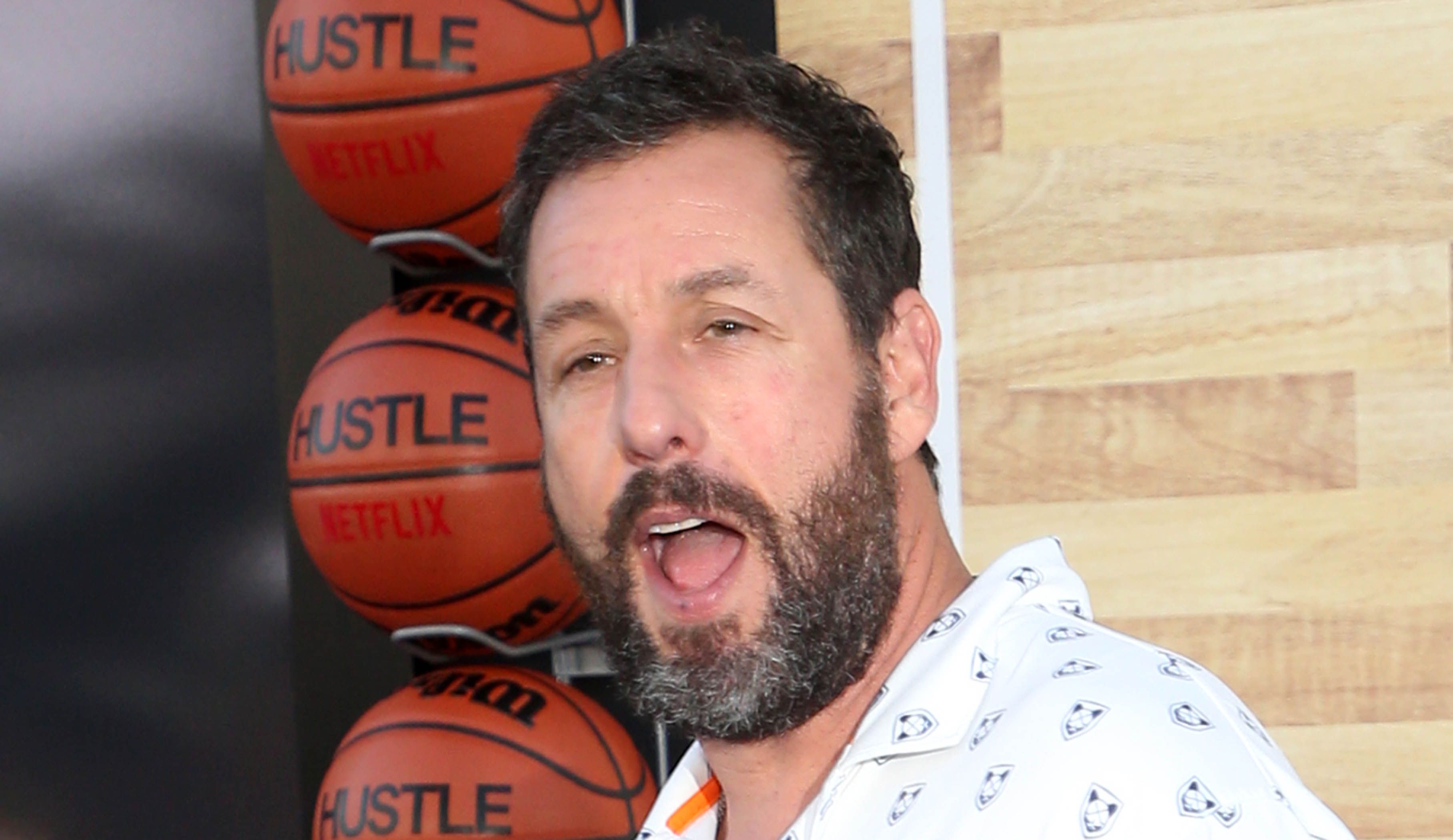Adam Sandler’s Career Trajectory

Adam Sandler, the comedic king of the “Happy Gilmore” and “Billy Madison” era, has had a long and interesting journey through the world of entertainment. His career, like a good bowl of spaghetti, has had its ups and downs, but it’s always been entertaining.
Evolution of Sandler’s Comedic Style
Sandler’s comedic style has evolved significantly throughout his career. His early work, characterized by outrageous characters and silly voices, was a hit with audiences. Films like “Billy Madison” (1995) and “Happy Gilmore” (1996) showcased his talent for physical comedy and creating memorable characters. However, as Sandler matured, his humor became more nuanced and introspective. Films like “Punch-Drunk Love” (2002) and “Uncut Gems” (2019) demonstrated his ability to tackle more serious themes while still maintaining his comedic edge.
Factors Contributing to Sandler’s Early Success
Sandler’s early success can be attributed to several factors. His unique brand of humor, characterized by its silliness and irreverence, resonated with audiences, particularly young adults. His ability to create memorable characters, such as the lovable but dim-witted Billy Madison and the golf-obsessed Happy Gilmore, further cemented his popularity. He also benefited from a strong supporting cast, including frequent collaborators like Chris Rock, David Spade, and Rob Schneider.
Reception of Sandler’s Early Work vs. Recent Films
Sandler’s early films were generally well-received by both critics and audiences. “Billy Madison” and “Happy Gilmore” were box office hits and received positive reviews for their humor and Sandler’s performances. However, as Sandler’s career progressed, his films began to receive more mixed reviews. While some critics praised his comedic talent, others criticized his reliance on slapstick and his frequent collaborations with the same group of actors.
Critical and Commercial Reception of Sandler’s Films
Sandler’s films have had a mixed reception over the years. While some of his films, like “Happy Gilmore” and “The Wedding Singer” (1998), have achieved both critical and commercial success, others, like “Jack and Jill” (2011) and “Pixels” (2015), have been met with critical derision and lukewarm box office returns. Sandler’s willingness to experiment with different genres, such as the dramatic “Punch-Drunk Love” and the crime thriller “Uncut Gems,” has garnered him critical acclaim, but his more comedic films have often been criticized for their predictability and lack of originality.
The Hurley Connection

The association between Adam Sandler and the word “Hurley” is a peculiar and enduring one, a recurring theme that has become almost as iconic as Sandler’s signature comedic style. This seemingly random connection, rooted in a simple mispronunciation, has permeated Sandler’s films, public persona, and even spawned its own cultural phenomenon.
The Origins of the “Hurley” Connection
The “Hurley” association originated in 1995 during the filming of “Billy Madison,” Sandler’s breakout comedy. While working on a scene where his character, Billy Madison, is trying to learn how to pronounce “Shirley,” Sandler, in a moment of comedic improvisation, accidentally said “Hurley” instead. This slip-up, seemingly a simple mistake, was embraced by the crew and director, leading to its inclusion in the final cut of the film.
The “Hurley” mispronunciation resonated with audiences, becoming a recurring gag throughout the film. The scene, where Billy Madison struggles to pronounce “Shirley” correctly, is now considered a classic Sandler moment, with the phrase “Hurley” becoming a beloved catchphrase for Sandler’s fans.
The Incorporation of “Hurley” in Sandler’s Work
The “Hurley” theme, born out of a simple mistake, has become a recurring motif in Sandler’s films and public persona. It has been woven into his films in various ways:
- Recurring Character: In several of Sandler’s films, like “Billy Madison,” “Happy Gilmore,” and “The Wedding Singer,” the character of “Hurley” appears, often as a friend or acquaintance of the protagonist. These characters, though not always explicitly named “Hurley,” often exhibit characteristics or traits associated with the mispronounced name.
- Humorous Dialogue: The “Hurley” mispronunciation has been incorporated into Sandler’s dialogue in numerous films, often used as a running gag or a comedic punchline. The phrase “Hurley” is frequently used in comedic contexts, either as a mispronunciation or a deliberate reference to the original scene in “Billy Madison.”
- Public Persona: The “Hurley” connection has even extended to Sandler’s public persona. He has been known to use the phrase in interviews and public appearances, further solidifying the connection in the minds of his fans.
The Cultural Significance of the “Hurley” Connection, Adam sandler hurley
The “Hurley” connection has become a significant part of Sandler’s comedic legacy. It has transcended the boundaries of his films, becoming a cultural phenomenon that has been embraced by fans and critics alike.
- Fan Culture: The “Hurley” theme has spawned its own fan culture, with fans creating memes, online communities, and even merchandise dedicated to the phrase. The enduring popularity of the “Hurley” connection is a testament to its cultural impact, demonstrating the power of humor and improvisation in shaping popular culture.
- Impact on Sandler’s Career: The “Hurley” connection has undoubtedly contributed to Sandler’s career trajectory, helping to solidify his image as a comedic icon. The phrase has become synonymous with Sandler’s comedic style, further enhancing his brand and his appeal to audiences.
The Enduring Popularity of the “Hurley” Connection
The enduring popularity of the “Hurley” connection can be attributed to several factors:
- Simple and Catchy: The phrase “Hurley” is simple, memorable, and easy to pronounce, making it easily accessible to audiences of all ages.
- Humor and Improvisation: The origins of the “Hurley” connection in Sandler’s improvisation add to its charm and humor. The fact that it was born out of a simple mistake makes it relatable and endearing.
- Nostalgia: The “Hurley” connection evokes nostalgia for Sandler’s early films, a time when his comedic style was at its peak. It serves as a reminder of his comedic genius and his ability to create enduring characters and catchphrases.
The Impact of Adam Sandler’s Comedy: Adam Sandler Hurley

Adam Sandler’s comedic style has left an undeniable mark on contemporary humor, shaping the landscape of modern comedy and influencing a generation of comedians. His unique blend of childish silliness, absurdist humor, and relatable characters has resonated with audiences worldwide, establishing him as a comedic icon.
Influence on Contemporary Humor
Sandler’s comedic style has profoundly impacted contemporary humor, introducing a new wave of comedic sensibilities that emphasize absurdity, physical humor, and relatable characters. He has popularized a brand of humor that embraces the unconventional and celebrates the everyday struggles of ordinary people. Sandler’s films often feature over-the-top characters, outrageous situations, and a distinct disregard for social norms, creating a comedic experience that is both hilarious and heartwarming.
Social and Cultural Commentary
While Sandler’s films are primarily known for their comedic value, they also offer insightful social and cultural commentary, often exploring themes of family, friendship, and societal norms. Sandler’s characters, despite their eccentricities, are often grounded in relatable human experiences. They grapple with the challenges of navigating family dynamics, maintaining friendships, and finding their place in a complex world. Sandler’s films often satirize societal expectations, highlighting the absurdity of certain social norms and challenging conventional thinking.
Adam Sandler’s Comedic Persona and Its Impact on Popular Culture
Sandler’s comedic persona has become a cultural phenomenon, shaping comedic trends and influencing generations of comedians. His signature style, characterized by his signature voice, exaggerated facial expressions, and silly characters, has become synonymous with a specific brand of humor. Sandler’s films have spawned countless catchphrases, iconic scenes, and memorable characters that have become part of the cultural lexicon. His comedic style has also influenced a new generation of comedians, who have adopted elements of his approach, blending absurdity, physical humor, and relatable characters into their own comedic styles.
Eh, Adam Sandler Hurley, that dude’s got a face that could make you laugh, but sometimes he’s just too goofy. Reminds me of those “Shakes the Clown” guys, you know? Like, those clowns are funny, but sometimes they’re a little too much.
Anyway, if you want to learn more about those “Shakes the Clown” phrases and how they evolved, check out this article: shakes the clown. Yeah, Adam Sandler Hurley’s got a lot of quirks, but hey, at least he’s got a heart of gold, right?
Eh, Adam Sandler Hurley, lumayan lah. Tapi kalo ngomongin komedi, gue lebih suka Kevin Meaney. Orangnya kocak abis, kayak lagi ngeliat kevin meaney di atas panggung, ngakak terus! Ya, meskipun Adam Sandler Hurley juga lucu, tapi kayaknya Kevin Meaney lebih pas buat gue.
Hehehe.
